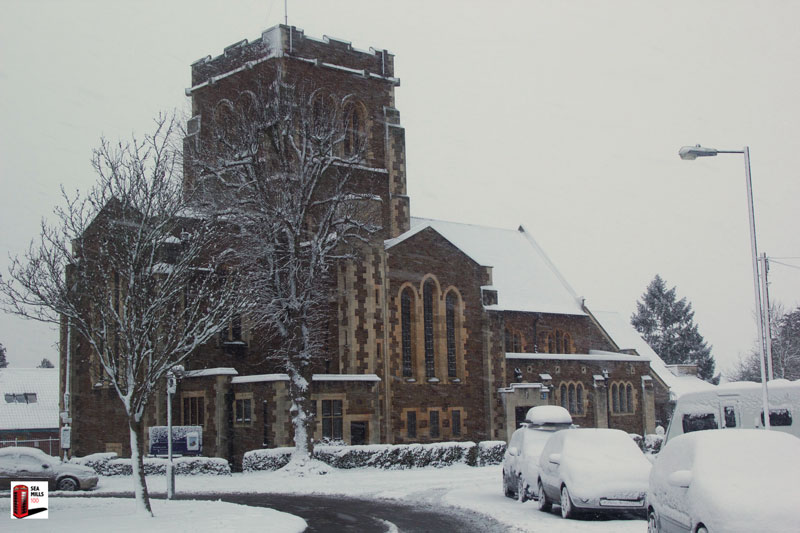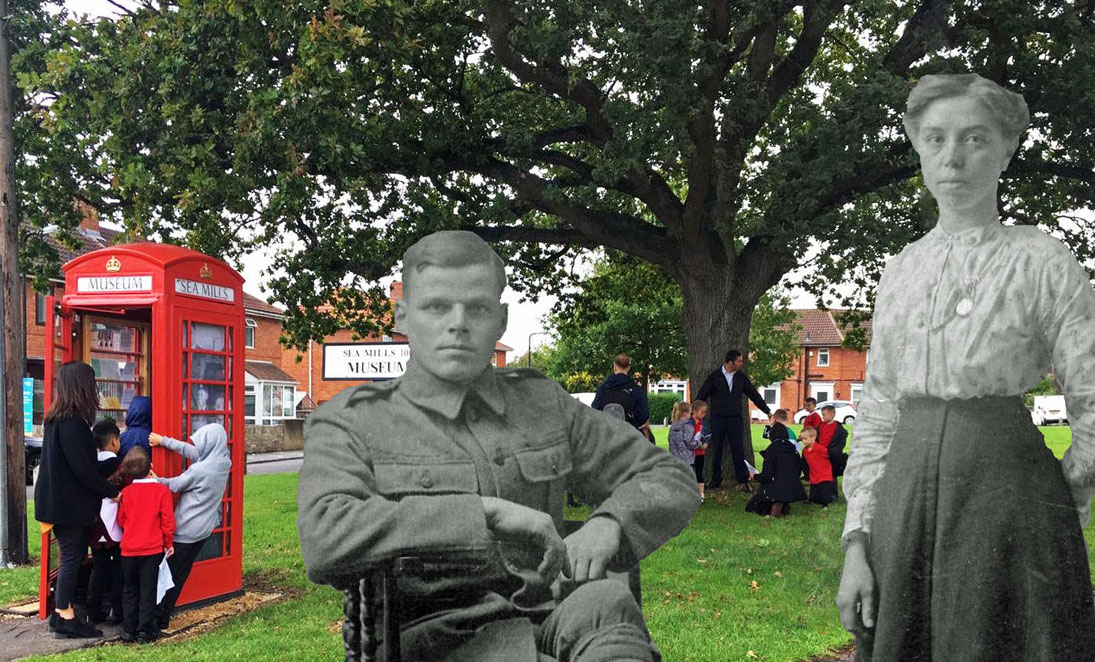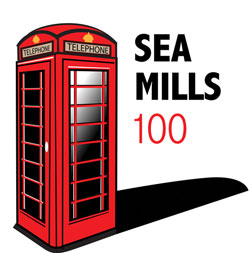Continue down Sylvan Way. When you reach Woodleaze (on your left), look across at the pair of semi-detached houses on the opposite side of Sylvan Way.
These are the only DLA6s – four-bedroom, parlour homes – to be built. Turn into Woodleaze. The houses immediately to your left and right are DLA2s, three-bedroom, non-parlour homes of which 100 were built. Alongside them are blocks of DLB5s. Continue to The Pentagon (8).
This is another of Sea Mills’ secondary centres, marking a convergence of five roads. The pillar box is of interest. It was made for use in Scotland in the 1950s and therefore does not have the cipher for Elizabeth II that would normally be found on post boxes from this period. The Catholic Scots did not recognise Elizabeth I, hence the reluctance to refer to our current queen as being the second to have that name. Despite extensive research, it is not known why the box ended up in Sea Mills. It is an unusual sight in England.
Adjacent to The Pentagon is St Edyth’s Church (9).
This landmark building makes what is referred to in garden suburb planning as a ‘terminal feature’, one that arrests the eye when looking down the long straight stretch of St Edyth’s Road from The Square. It is the focal point for The Pentagon. The foundation stone was laid in 1926 and the church was consecrated in 1928. Like the Methodist Church seen earlier, it was designed by George Oatley, who was knighted for his public service in 1925.

Sylvan Way / Sea Mills Primary School (directions to next stop)


